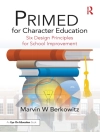Looking for a silver bullet to accelerate EL achievement? There is none.
But this, we promise: when EL specialists and general ed teachers pool their expertise, your ELs’ language development and content mastery will improve exponentially. Just ask the tens of thousands of Collaboration and Co-Teaching users and now, a new generation of educators, thanks to this all-new second edition: Collaborating for English Learners.
Why this new edition? Because more than a decade of implementation has generated for Andrea Honigsfeld and Maria Dove new insight into what exemplary teacher collaboration looks like, which essential frameworks must be established, and how integrated approaches to ELD services benefit all stakeholders. Essentially a roadmap to the many different ways we can all work together, this second edition of Collaborating for English Learners features:
- All-new examples, case studies, illustrative video, and policy updates
- In-depth coverage of the full range of strategies and configurations for determining the best model to adopt
- Templates, planning guides, and other practical tools to put collaboration into practice
- Guidelines, self-assessments, and questionnaires for evaluating the strategies’ effectiveness
Inhoudsopgave
Preface
Acknowledgments
About the Authors
1. What Is This Book About?
Overview
What Guided Us When We Wrote This Book?
The Purpose
Structure and Organization of the Book
The English Learner Population
Collaboration
Program Models Serving English Learners
What Can We Learn From the History and Research on Collaborative Practices?
Teacher Collaboration in Today’s Schools 17
Summary
Discussion Questions
Key Online Resources
2. Why Is Collaboration Needed?
Overview
Understanding English Learners
Challenges School Administrators Face
Why Collaboration Is the Answer to the Challenges Teachers and Administrators Face
Why Co-Teaching Is a Possible Answer to Challenges Teachers and Administrators Face
Administrators’ Role: Creating a School Community to Support Effective Instruction for ELs
Summary
Discussion Questions
Key Online Resources
3. Who Does Teacher Collaboration and Co-Teaching for ELs Concern?
Overview
All Stakeholders
Administrators’ Role: Developing and Sustaining a Collaborative School Culture
Summary
Discussion Questions
Key Online Resources
4. What Are the Essential Components of an Integrated, Collaborative Service Delivery for ELs?
Overview
Informal Collaborative Practices
Formal Collaborative Practices
Administrators’ Role: Creating Collaborative Opportunities and Supporting Collaborative Efforts
What Administrators Need to Consider
Summary
Discussion Questions
Key Online Resources
5. How Do Teachers Plan, Instruct, Assess, and Reflect Collaboratively?
Overview
Making a Case for Collaborative Efforts
Launching the Collaboration Team: Top Down or Bottom Up?
Collaborative Teams in Action
A Framework for Effective Collaborative Instruction
Technology and Collaboration
Co-Teaching for Powerful Instruction
Collaborative Student Assessment
Administrators’ Role: Effective Management of Resources
Summary
Discussion Questions
Key Online Resources
6. When Do Teachers Collaborate and Co-Teach?
Overview
Time and Structure for Teamwork
Setting a Purpose for Collaboration
Two Observations of Ongoing Collaboration
A Remedy for Time Limitations: Conversation Protocols
When Do Collaborative Teams Meet?
Expectations for Teacher Collaboration
Time frames for Co-teaching
Administrators’ Role: Scheduling and Supporting Collaborative and Co-Teaching Practices
Summary
Discussion Questions
Key Online Resources
7. Where Do Teachers Collaborate and Co-Teach?
Overview
Reexamining the Importance of Positive School Culture
Spaces and Places for Teacher Collaboration
Collaboration Inside the Classroom
Classroom Design for Co-Taught Lessons
The Impact of Classroom Design
Administrators’ Role: School Organization and Logistics
Summary
Discussion Questions
Key Online Resources
8. What Next? Reviewing and Evaluating Integrated, Collaborative Service Delivery for ELs
Overview
Reflective Practices
Self-Assessment Tools
Ongoing (Formative) Collaborative Program Assessment
Program Evaluation
Administrators’ Role: Leading Effective Assessment Practices
Summary
Discussion Questions
Key Online Resources
9. Portraits of Collaboration
Overview
Districtwide Case Study
Elementary School Case Study #1
Elementary School Case Study #2
Middle School Case Study #1
Middle School Case Study #2
High School Case Study #1
High School Case Study #2
Summary
Discussion Questions
References
Name Index
Subject Index
Over de auteur
Maria G. Dove, Ed.D, is currently a Professor in the School of Education and Human Services at Molloy College, Rockville Centre, New York. Prior to working in higher education, she spent over thirty years as an English-as-a-second-language teacher in public schools and adult English language programs. She is well-known for her professional development work across the United States, focusing on culturally and linguistically diverse students. Dove′s work has led her to publish books, articles, and chapters on collaborative teaching practices and instructional strategies for English learners. In collaboration with Andrea Honigsfeld, she has co-authored four best-selling Corwin Press books including Collaboration for English Learners: A Foundational Guide to Integrated Practices (2019).












